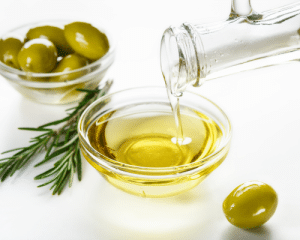
When Do You Need to Remove Earwax?
Before you start using olive oil in your ears, you should first determine whether it’s necessary; do you have excess earwax or is it just a normal, healthy amount?
A small amount of earwax in the outer third of the ear canal forms a healthy barrier against infection, lubricates the ear canals, and captures and prevents dust and dirt from entering the ear.
The ears are designed to ‘self-clean’. A migrating skin layer carries the wax out of the ear as it builds. However, this very clever system isn’t fool proof! On occasion due to anatomy of the ears (hairy, bendy, narrow ear canals) or for lifestyle reasons (wearing hearing aids, earplugs, using cotton buds), wax can build up in the ear canals. You may also be genetically predisposed to over-producing earwax. This can lead to uncomfortable symptoms and therefore wax removal is clinically indicated during these times.
If you are: having difficulty hearing at home or at work; hearing your own voice in your head; feeling off balance; suffering a worsening of ringing in the ears; or you are finding water is becoming trapped in your ears after swimming or showering; you may be suffering from a build-up of earwax. Other symptoms include a sensation of fullness, itching, and discharge.
Is Ear Wax Removal with Olive Oil Actually Effective?
One study explored different methods of earwax removal and concluded that although softeners are effective for softening and/or removing wax, ‘which specific softeners are most effective remains uncertain’. Another experimental study, however, was conducted to determine whether daily lubrication of the external ear canal with olive oil enhances the normal expulsion of earwax.
It found that whilst regular olive oil lubrication increased the ear canal contents, olive oil applied to the ears immediately before removing wax enabled total wax removal.
This reinforces our experience at Earworx. Earworx have found that whilst it does not occur 100% of the time, olive oil applied a few days before or on the day of the procedure helps to soften the earwax but does not break it down; a perfect scenario for wax removal via microsuction. Our Registered Nurses then apply suction to the pre-softened wax and this usually enables for an easier and quicker removal via microsuction.
Softened wax is also more likely to be carried out of the ear by the migrating skin layer – it supports the ‘self-cleaning’ process of the ear and is always worth a try as a first step where the ear is blocked with wax.
Is Olive Oil Safe for Your Ears?
If you’re thinking about using olive oil to soften your earwax, you should be mindful of some of the risks that it can pose. Wax softening drops of any variety are not safe for some people, such as people who have perforated eardrums, those who have had ear surgery including grommet insertion, or those with a current ear infection. If you are unsure whether wax softening drops are suitable for you, you should first consult with a clinician.
Some websites suggest that olive oil is more effective when heated up, however this may be potentially dangerous as you risk burning your ear canal or ear drum – it is safest used at room temperature only.
The Safest and Most Effective Method for Ear Wax Removal: Micro-Suction
A safe and effective method for ear wax removal is micro-suction and curettage, as conducted by Earworx Registered Nurses. This technique can be used in conjunction with olive oil drops, wax softening drops, or, if you are unable to use these drops, microsuction can be performed on its own. It is a quick and dry process (no water involved) and is the method endorsed by ENT specialists.
Earworx nurses are all specially trained in the procedure; they have all undertaken both a period of study and an extended practical placement to learn how to remove wax safely and gently. They will firstly take a history, explain the procedure to you, and then perform the procedure in a way that reduces risk and this is all under direct observation with special glasses known as ‘loupes’. You will even be provided with some education during your appointment.
If you’re suffering from a blocked ear and are planning on booking an appointment with us, Earworx nurses recommend the use of wax softening drops prior to your appointment. Olive oil or a product called Ear Clear (from your local chemist) are our products of choice. This will help to speed up the wax removal process as it means the wax will be lubricated prior to the appointment and therefore more willing to move.
Overall, while olive oil can certainly help wax removal, it is most effective when combined with other wax removal techniques like micro-suction as provided by our specially trained Earworx Registered Nurses.
More Information
Click here to view or download the Earworx brochure
Please contact your nearest Earworx clinic and our Registered Nurses will answer any questions that you may have.
